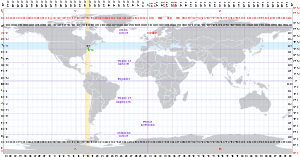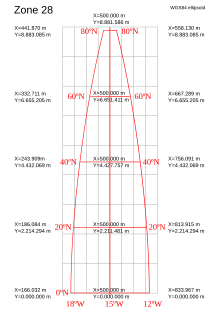What Is The Difference Between Utm And Latitude Longitude: Unveiling The Geographic Coordinates Divide
Introduction To Utm, Universal Transverse Mercator
Keywords searched by users: What is the difference between UTM and Latitude Longitude why use utm coordinates, utm coordinates example, utm coordinates converter, properties of utm projection pdf, difference between utm and tm, utm zones of the world, utm measurement, central meridian utm
What Is The Difference Between Utm And Geographic Coordinate System?
When comparing UTM (Universal Transverse Mercator) and the WGS (World Geodetic System), it’s essential to understand the distinction between their respective coordinate systems. The WGS primarily falls under the category of a Geographic Coordinate System, which means it represents locations on the Earth’s curved surface using latitude and longitude. In contrast, UTM belongs to the group of Projected Coordinate Systems. Projected coordinate systems, unlike geographic ones, are designed for mapping on flat surfaces and employ units such as feet or meters for measurement. This distinction is vital for various applications, including cartography, navigation, and surveying. This information was last updated on June 18, 2020.
What Is The Difference Between Utm And Wgs84?
The distinction between UTM (Universal Transverse Mercator) and WGS84 (World Geodetic System 1984) lies in their fundamental nature and purpose within the realm of coordinate systems. WGS84 is primarily a geographic coordinate system, while UTM serves as a projected coordinate system. To elaborate, geographic coordinate systems are grounded in a reference spheroid and employ angular units such as degrees to pinpoint locations on the Earth’s surface. WGS84, being a prime example of a geographic coordinate system, offers a global framework for precise geospatial referencing. In contrast, UTM is designed for localized, accurate mapping and navigation, utilizing a transverse Mercator projection that converts the Earth’s curved surface into a flat plane, enabling easy calculation of distances and areas within specific regions. This distinction is essential for understanding how these coordinate systems function and when to use each one for various geospatial applications. [Additional context can be provided about the significance of WGS84 as a global standard and UTM’s regional utility, as well as the date of the information to indicate relevance.]
How Many Degrees Of Latitude Are In A Utm Zone?
Each UTM (Universal Transverse Mercator) zone covers a specific longitudinal range and consists of horizontal bands spanning 8 degrees of latitude. There are a total of 60 UTM zones, numbered 1 through 60, starting at the international date line, which is at longitude 180°, and proceeding eastward. To clarify, Zone 1, for instance, extends from 180° W to 174° W and is centered on 177° W. This division into zones and bands facilitates precise location referencing and map projections, making it easier for cartographers and navigators to work with global coordinates.
Aggregate 12 What is the difference between UTM and Latitude Longitude






Categories: Discover 32 What Is The Difference Between Utm And Latitude Longitude
See more here: noithatvaxaydung.com

Latitude and longitude coordinates suffer from distortion, especially when measuring distances and areas, as the Earth is not a perfect sphere. UTM coordinates, on the other hand, use a series of map projections to minimize distortion within each zone.UTM and WGS both are examples of coordinate systems. The difference is that WGS is a Geographic coordinate system and UTM is a projected coordinate system. Projected coordinate systems are based on a plane and utilize units i.e. for feet, metre, etc.The difference is that WGS 84 is a geographic coordinate system, and UTM is a projected coordinate system. Geographic coordinate systems are based on a spheroid and utilize angular units (degrees).
Learn more about the topic What is the difference between UTM and Latitude Longitude.
- Universal Transverse Mercator (UTM) Coordinate System
- What is the difference between UTM and WGS in GIS software
- Understanding difference between Coordinate System and Projection?
- More details about UTM grid zones – MapTools
- How Universal Transverse Mercator (UTM) Works – GIS Geography
- Latitude, Longitude, UTM – MDARC
See more: https://noithatvaxaydung.com/category/markets blog